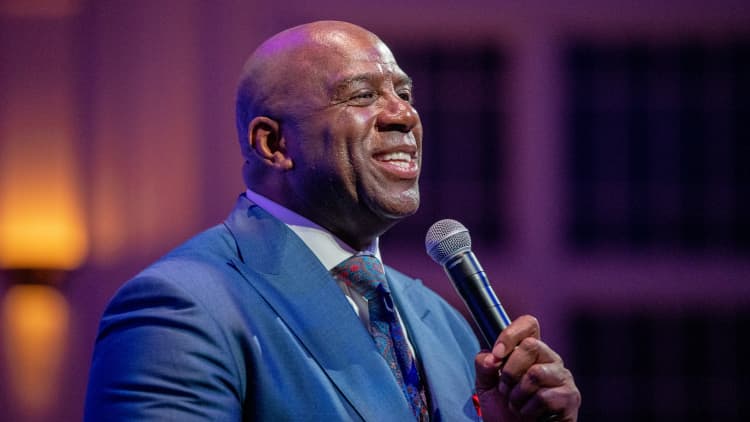Phoebe Gavin, 37, is no stranger to anxiety at work.
She gives the example of sending her boss a memo and not hearing back for a few days. "That must mean it's terrible," she says of her automatic thinking. "And now I'm so anxious about what my next interaction is going to be with them in my on one-on-one on Thursday. They must be about to fire me."
Gavin is a full-time leadership and career coach but in the past has worked for companies like Vox and Quartz.
Despite having struggled with anxiety her whole life, Gavin was only diagnosed with Generalized Anxiety Disorder at 23. When she experiences it now, "it feels like heat and pressure," she says. "It feels like it's really difficult for me to breathe. I feel like the air has turned into this really thick, hot blanket."
Over the years, Gavin's found a number of tactics to deal with these symptoms when they come up at work (some of which she discussed in a recent Netflix documentary, "Take Your Pills: Xanax"). Here are a few she's been able to adopt in the office.
Box breathing
Breathing exercises can help elicit a state of relaxation in the body, according to Harvard Medical School. Gavin uses one called box breathing, or four-by-four breathing.
"You just breathe in slowly for four counts. Hold it in for four counts. Let it out for four counts. Leave your lungs empty for four counts," she says, adding that, "you can just do it sitting there in the meeting or in the conference room and nobody knows."
Judson Brewer, psychiatrist and chief medical officer at wellness company Sharecare, also recommends an exercise called five-finger breathing. "As few as five breaths, if you trace your one hand with the other hand as you're breathing, it's a really great way to ground," he says.
Meditating
Gavin also meditates to calm her mind and body.
"I was an early adopter of Headspace," she says of the mindfulness/meditation app. "That was my entree into meditation. And I felt such a huge difference in the way that I felt about myself and felt about the world" when she started using it. She now meditates for a few minutes four times per day: when she wakes up in the morning, before she starts working, after lunch and before going to sleep.
Headspace offers guided meditations, courses and mindfulness exercises for stress and anxiety. Other apps targeting anxiety include the Calm app and Unwinding Anxiety.
Cognitive behavioral therapy
Gavin has been seeing a therapist since she was a kid. Though sessions don't happen in the workplace itself, it's been a great help when it comes to dealing with any anxiety that comes up in the office.
"The best thing that anyone can do if they're experiencing a lot of anxiety in the workplace is to get some therapy, specifically cognitive behavioral therapy," she says. The goal of CBT is to change harmful or unproductive thinking and behavioral patterns, according to the American Psychological Association. Therapists help patients get clarity on where their thoughts are coming from and what they're ultimately leading them to do and feel.
"If you have access to a health-care plan that covers therapy in some way, take advantage of that," says Gavin, "and start talking about what's happening to you at work, start digging into where the roots of that might lie in earlier parts of your life so that you can start building coping mechanisms."
If you don't have access to health insurance through work or it doesn't include therapy, many community health clinics offer counseling for those without insurance, says Chace Cassine, a licensed clinical social worker at DePaul Community Health Center. Student counseling centers sometimes open their doors to the public as well and there are numerous apps that offer therapy for reduced prices.
'Oh, you're doing anxiety irrational thought spiral'
Ultimately, all of these tools have helped Gavin gain awareness of where her mind is going and why it's going there. They've helped her reframe any work situation in which her anxiety comes up and gain perspective.
"I'm able to notice, like, 'Oh, you're doing anxiety irrational thought spiral, okay,'" she says. "And I'm able to go into my toolbox and find something that's useful." In the case of the unanswered memo, for example, she was able to remind herself that her boss is simply busy and likely hasn't had a chance to read what she sent.
When they finally had their one-on-one, she says, her boss let her know the "memo was great."
Check out:
Anxiety could be holding you back at work—3 signs to look for, according to a psychotherapist
31-year-old started suffering stomachaches after a monthslong job search—how she managed her anxiety
Sign up now: Get smarter about your money and career with our weekly newsletter



